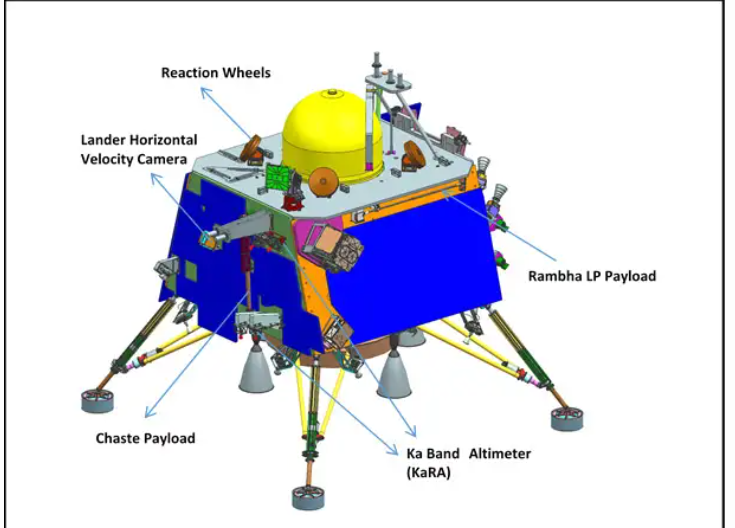ChaSTE: Chandrayaan-3’s Breakthrough in Lunar Soil Exploration
Why in the News ?
Chandrayaan-3’s ChaSTE instrument successfully penetrated lunar soil, making history as the first mission to deploy a thermal probe on a celestial body. This accomplishment comes after previous missions MUPUS and HP3 faced challenges during similar attempts on a comet and Mars.
About ChaSTE and Chandrayaan-3’s Achievement:
- ChaSTE (Chandra’s Surface Thermophysical Experiment) is a thermal probe on Chandrayaan-3’s Vikram lander.
- Landed on the moon’s south pole on August 23, 2023, and deployed the thermal probe to measure temperatures in situ.
- Successfully tunneled 10 cm into the lunar soil, collecting temperature data throughout the mission until September 2, 2023.
- Confirmed the prevalence of water ice near the moon’s south pole, a significant scientific discovery.
Comparison with Previous Missions (MUPUS and HP3):
- In 2014, the European Space Agency’s Philae lander, part of the Rosetta mission, failed to deploy its MUPUS thermal probe on comet 67P due to an awkward landing.
- In 2018, NASA’s InSight mission to Mars faced difficulties as the HP3 instrument, nicknamed “The Mole,” couldn’t dig deeper than a few centimeters due to low friction with Martian soil.
- Unlike MUPUS and HP3, ChaSTE used a rotation-based deployment mechanism, enabling successful soil penetration.
Unique Technology and Success Factors of ChaSTE:
- ChaSTE features 10 temperature sensors along its length to accurately measure soil temperatures.
- The rotation-based device allowed gradual soil penetration, overcoming resistance without hammering.
- Durga Prasad K., principal investigator from PRL Ahmedabad, attributed the success to this innovative design.
- Marked a significant advancement in thermal exploration of celestial bodies.
Chandra’s Surface Thermophysical Experiment (ChaSTE):● Purpose: Measures in-situ temperatures near the moon’s south pole using 10 temperature sensors spaced 1 cm apart along its length. ● Deployment: Utilizes a rotation-based mechanism to penetrate 10 cm into lunar soil during Chandrayaan-3’s mission lifespan (1 lunar day). ● Observations:
○ Peak Surface Temperature: Recorded 355 K (82°C) at Shiv Shakti landing site, 25 K higher than predicted 330 K. ○ Spatial Variability: Detected significant temperature variations at high latitudes. ○ Water-Ice Discovery: Confirmed higher-than-expected water ice presence, vital for human habitat and exploration. |




